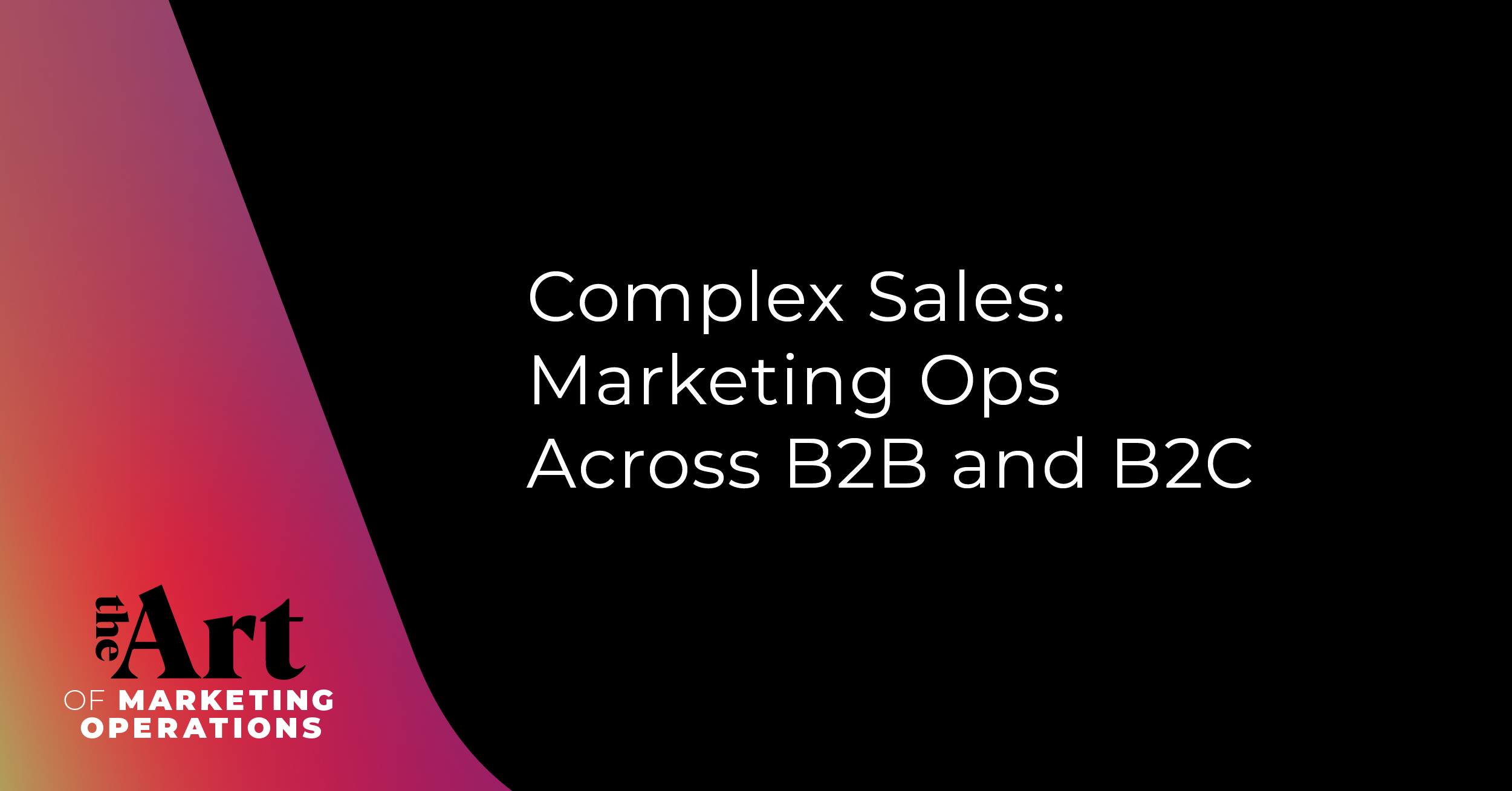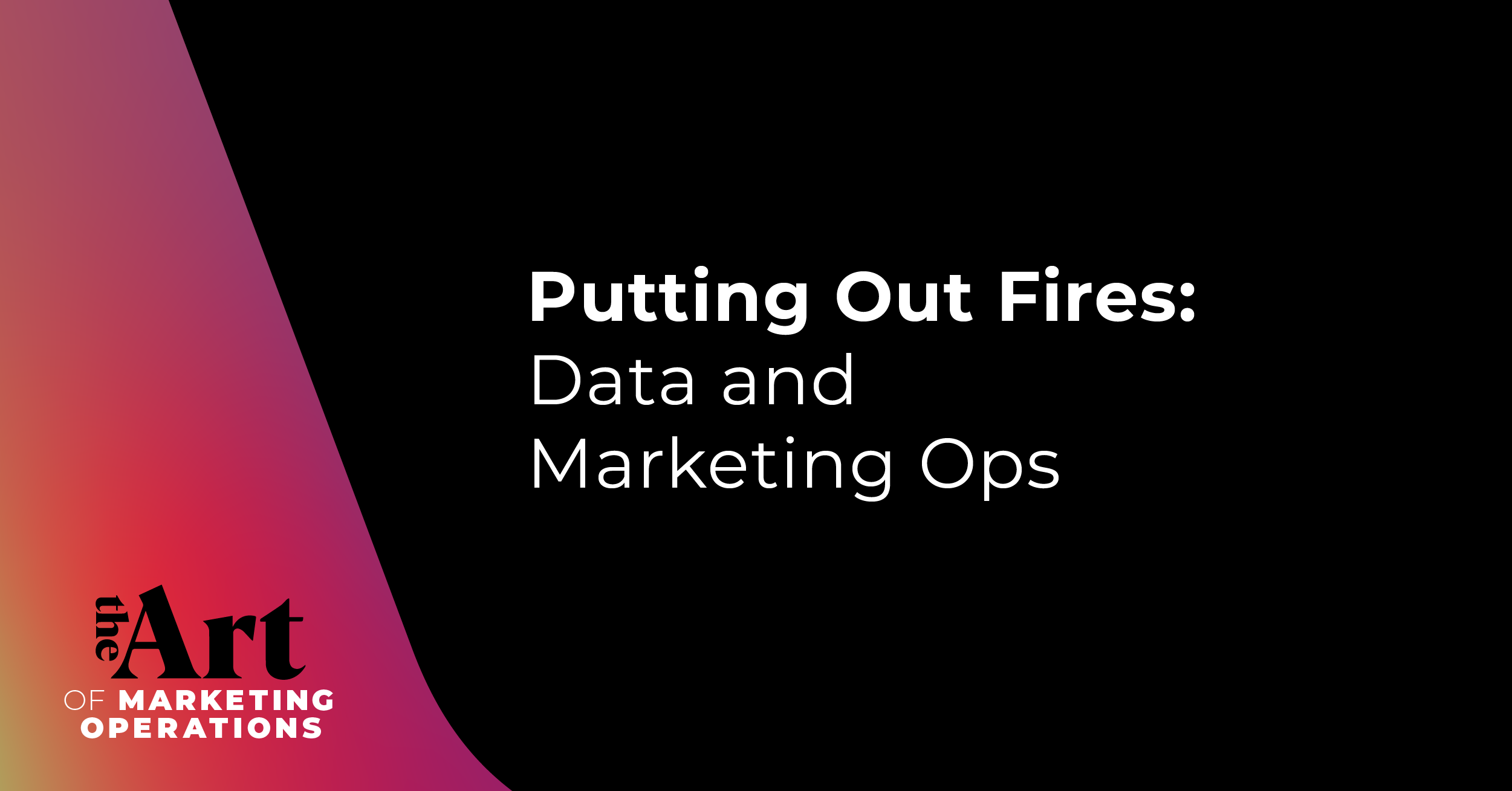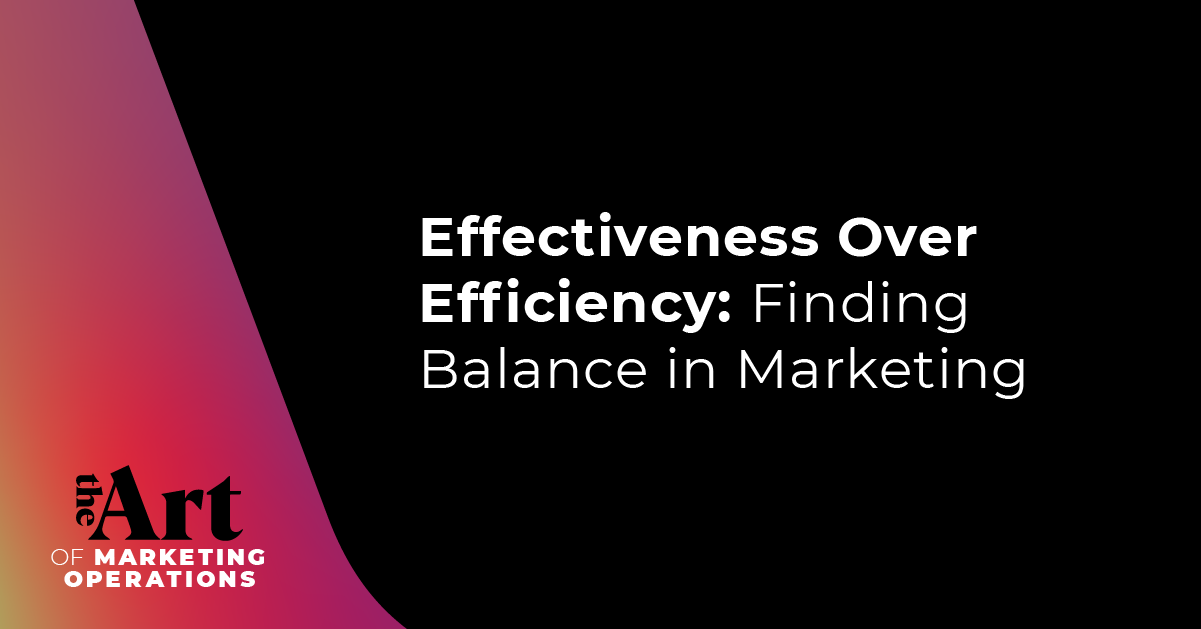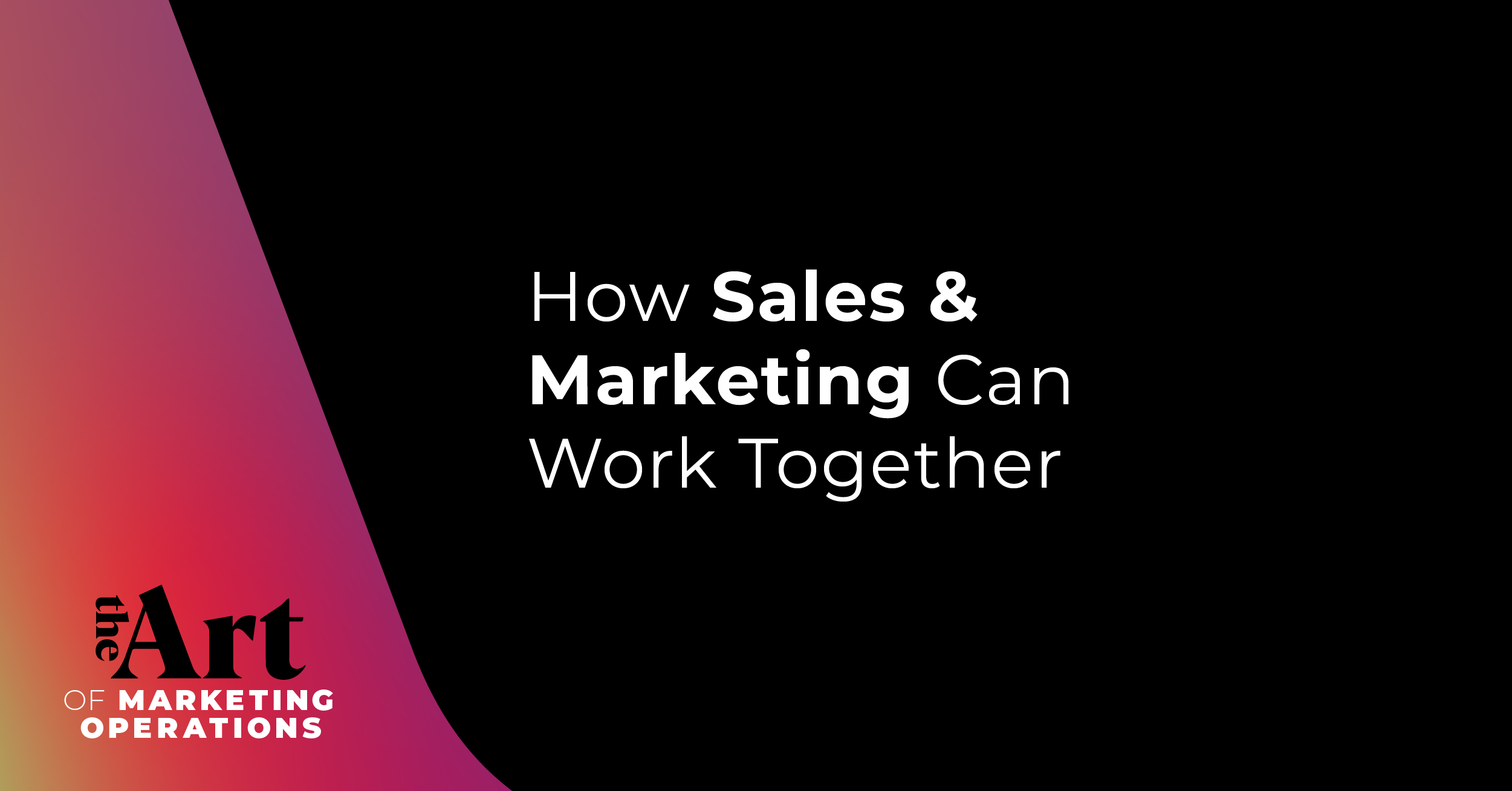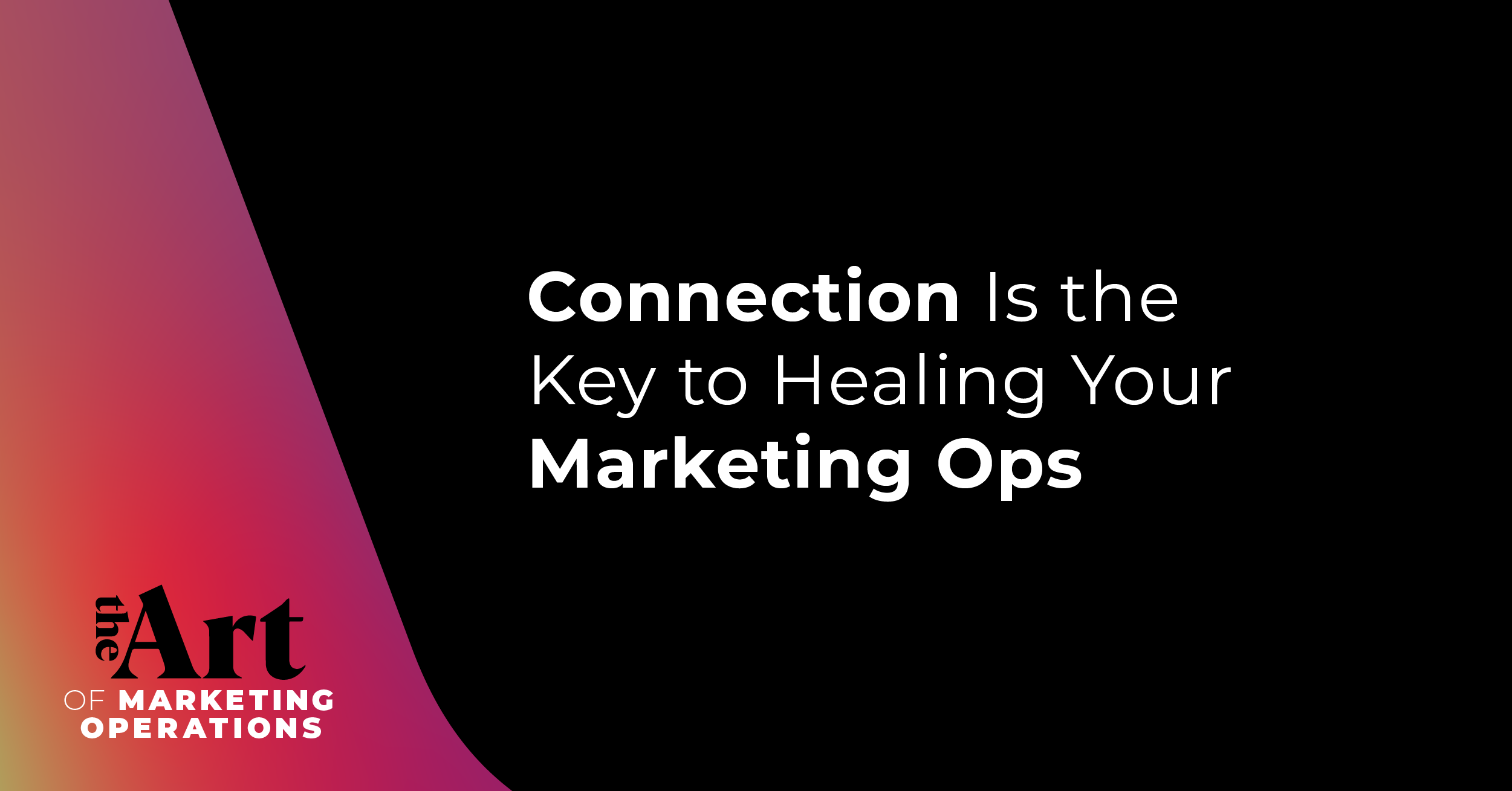Why should you communicate with your tech stack administrator? How do you track attribution consistently across sales and marketing? Is an NPS even useful?
Look no further—we have answers for you.
In this episode, I interviewed Jasmine Carnell, Sales Operations Senior Analyst at Lessonly about the pitfalls and triumphs of revenue operations, marketing, sales, and how they all feed into one another.
Join us as we discuss:
- Challenges in marketing operations
- Best tools for marketing operations
- The intricacies of revenue operations
- Uses for an NPS (Net Promoter Score)
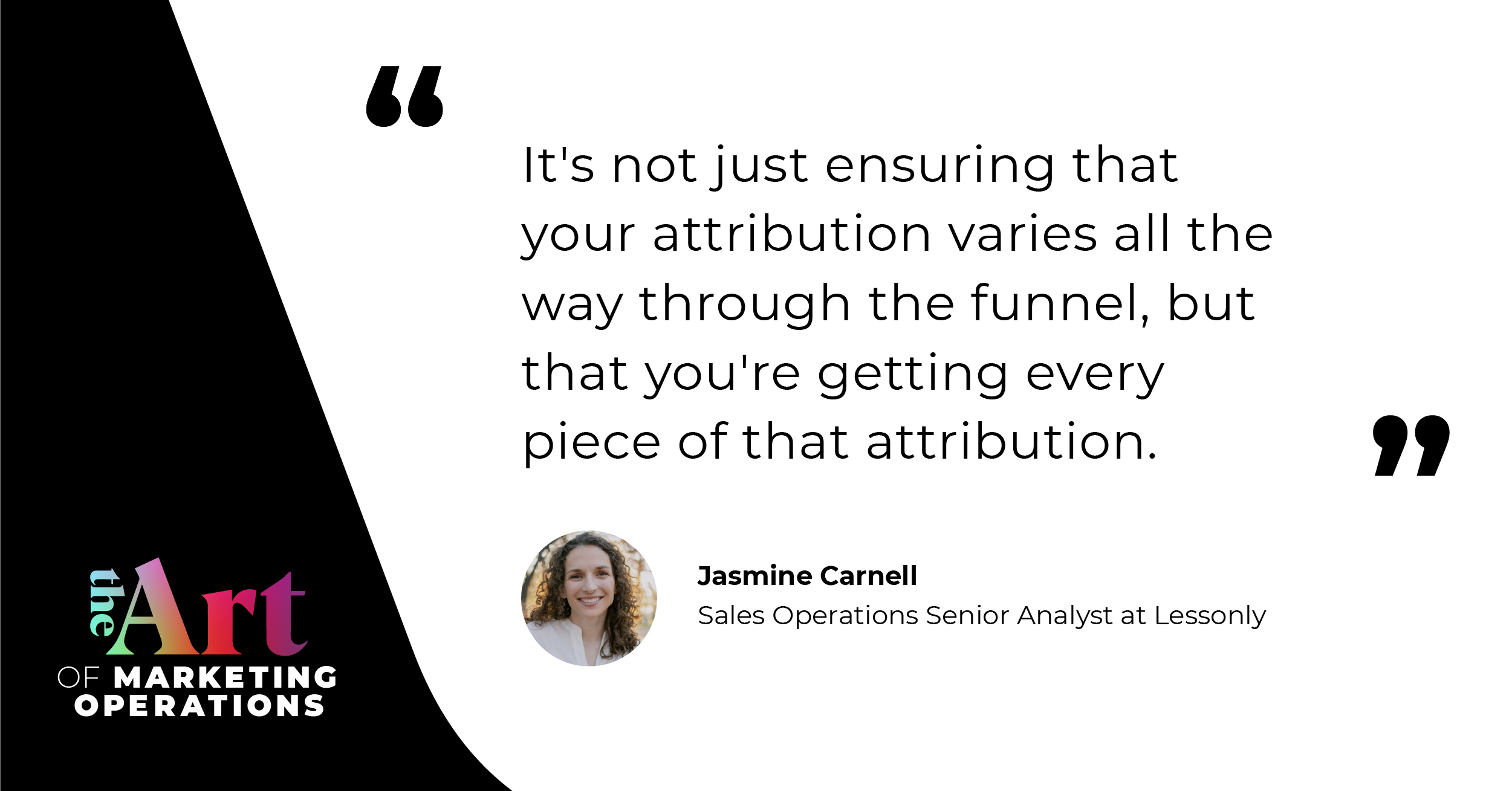
“It's not just ensuring that your attribution varies all the way through the funnel, but that you're getting every piece of that attribution.”— Jasmine Carnell
Challenges In Marketing Operations
There’s no shortage of challenges in marketing ops. A specific struggle can come from attribution—when you have multiple channels and points of conversion, how do you nail down where that customer converted?
“I think what's important is data.” said Jasmine, explaining the pain point of tracking down proper attribution.
“In the end, as long as you're capturing every single point of how you're reaching out to that customer, and that customers’ ultimately then tied to the opportunity or the record of the close deal, you're going to have all of those different pieces of how you reached out to that prospect and who reached out, and when to then tie to attribution.” she continued.
A big part of that process is the tools you’re using. Whatever you choose, make sure it’s serving your purposes and providing the data you need to move forward.
Best Tools For Marketing Operations
During her career, Jasmine has used her fair share of software. She discovered that the best ones sit between sales and marketing for a well-rounded view.
Jasmine shared a few worthwhile options with us:
1 - SalesLoft
It may be surprising to see this in a marketing ops list, but it’s one of the best tools out there for creating a harmonious sales & marketing workflow.
2 - Outreach
Another solid option for cohesive collaboration, Outreach provides inroads to other departments and clear pictures of processes.
3 - Salesforce
Good ol’ Salesforce has more of a focus on the customer journey, which is excellent for tracking common touch points.
Sometimes the tool really does make the job. Or, at the very least, makes the job more efficient.
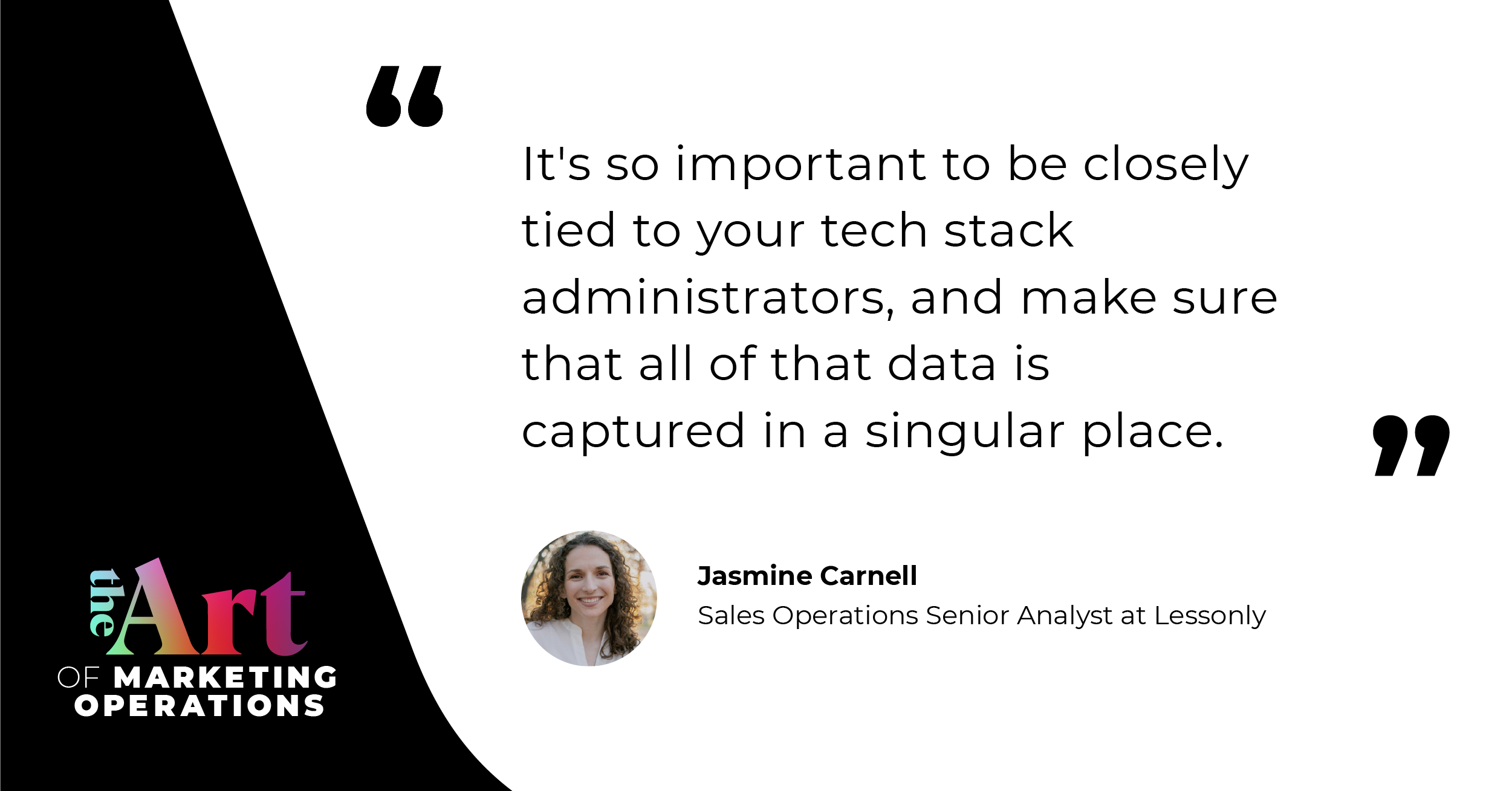
“It's so important to be closely tied to your tech stack administrators, and make sure that all of that data is captured in a singular place.” — Jasmine Carnell
The Intricacies of Revenue Operations
Revenue operations are more than you think. Beyond stats and budgeting, there is a whole other side that touches each corner of marketing.
“Revenue operations, to me, is a function that obviously is an operation for the entire revenue funnel, and marketing participates in that funnel.” Jasmine explained.
Some may argue that marketing operations should sit under marketing—that’s not the case. Most marketing leaders focus on branding, messaging, promo, etc.
While marketing operations focus on lead routing, scoring, and functionality. The skeleton of the funnel. There’s also a close relationship between them, other revenue leaders, and tech stack administrators.
“I would absolutely argue that marketing operations should roll up into revenue operations.” continued Jasmine.
Under the same umbrella, they can make more powerful moves for processes, systems, and technological adoptions.
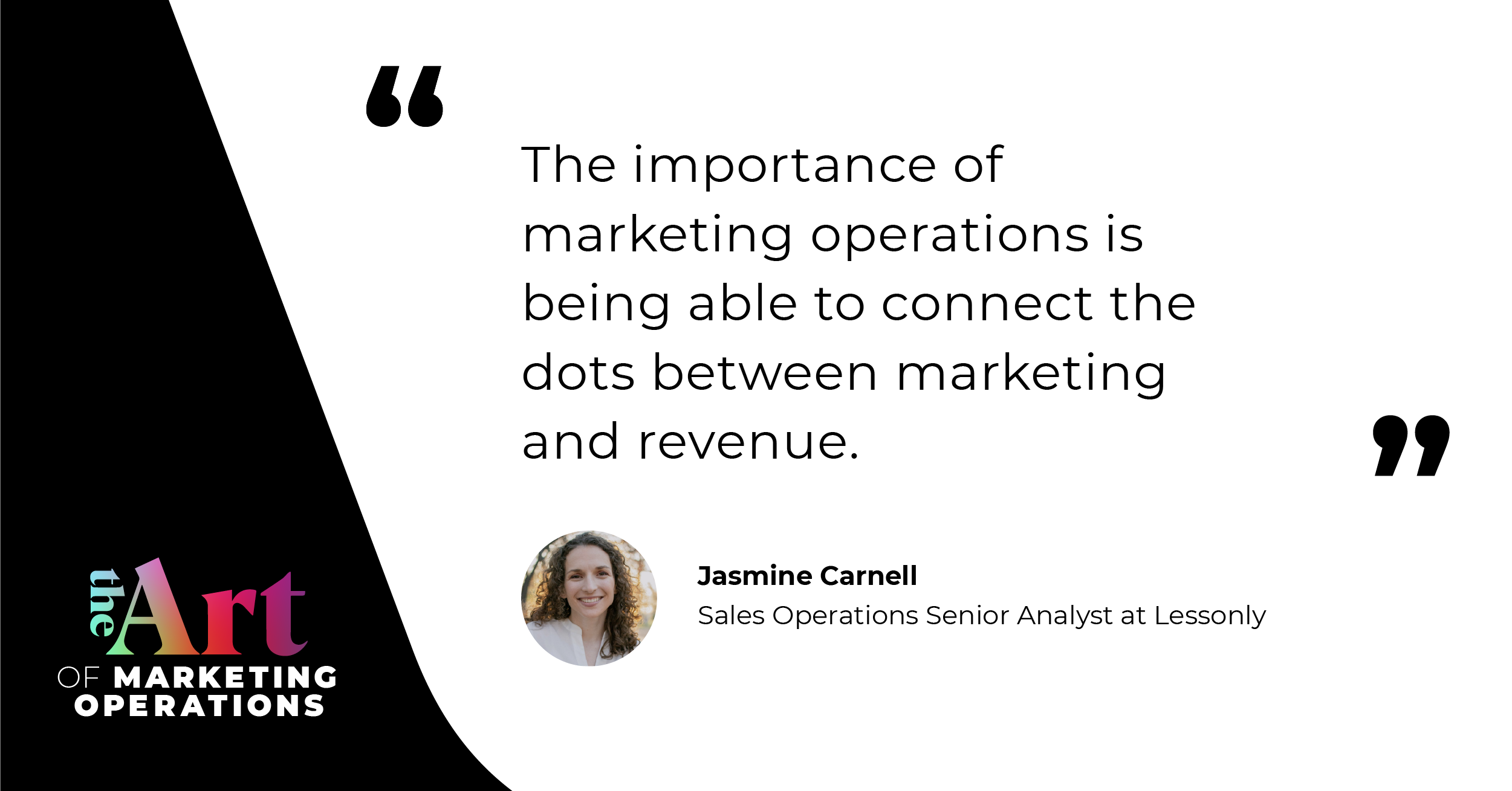
“The importance of marketing operations is being able to connect the dots between marketing and revenue.” — Jasmine Carnell
Uses for an NPS (Net Promoter Score)
Are Net Promoter Scores even worth measuring? According to Jasmine, yes…but also not really.
The usefulness of an NPS is on a case by case basis. Some companies depend on them, while others abandon them entirely.
“There are very strict times within a customer's lifecycle or an annual contract that we will want to time our NPS based on the services that we're delivering on those dates,” said Jasmine.
If you choose to use an NPS, timing is everything.
“We actually found that we were able to understand our retention more with NPS scores. We did see a higher retention with a higher NPS,” she reflected.
And with that comes the opportunity to catch low scores, too, and address pain points to reduce churn before it’s too late.
“If you're gathering comments on those NPS scores as well, which most organizations do, you're able to get live insight that they might not share on a customer call or a quarterly business review.” continued Jasmine.
With that type of insight, you can build out action items that affect multiple departments; from customer success to support teams to sales.
Net Promoter Scores can help ensure people receive what they expected in the subscription, service, or product they paid for.
Because at the end of the day, revenue ops can be traced back to providing value to the customer through consistent documentation and strategy.







